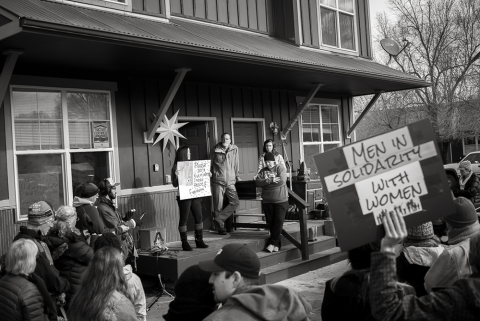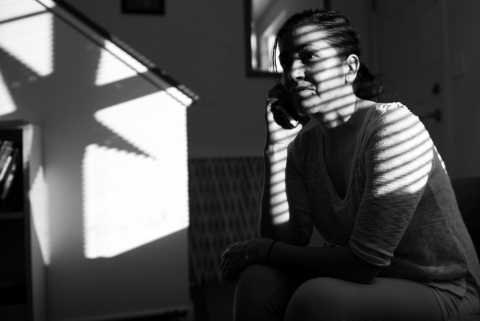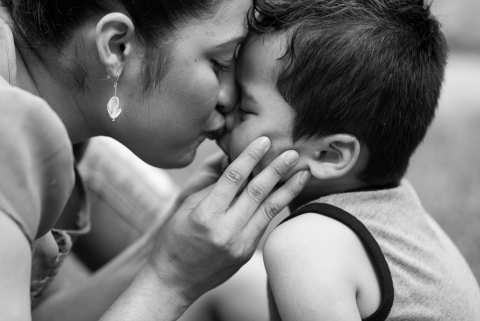DU Alumna Uses Photography to Show Hardships of Those Living in Sanctuary
As an elementary school teacher in Carbondale, Colorado, Laurel Smith (BA ’09) repeatedly saw the impact a flawed U.S. immigration system can have on families: schoolyard taunts about a border wall; children in fear their parents will be deported.
“I could make changes within my school to try and get [the kids] a more equitable education,” she says, “but I couldn’t relieve them of their fears that when they got home, their parents wouldn’t be there.”
In 2017, when Smith quit her teaching job to pursue her passion for photography and video full time, she found herself in the right place at the right time to document a heartbreaking immigration story firsthand: Sandra Lopez, one of four Colorado women who chose to pursue sanctuary inside churches rather than face deportation and abandon their families, did so in Carbondale, just blocks from Smith’s house. The reverend’s son was one of her former students.
“As a teacher, I did a lot of advocacy work for our Latino population, and I wanted to continue that work when I left teaching and incorporate it into my photography,” Smith says. “When I heard about Sandra’s story, I contacted her, probably about two weeks after she entered sanctuary, and I’ve been documenting her story ever since.”
For more than a year, Smith spent as many as three or four days a week at Two Rivers Unitarian Universalist parsonage, where Lopez took refuge after a 911 call from her son — made in response to an argument between his parents — resulted in a threat of deportation. (Colorado SB-90, which mandated that police officers report any person arrested to ICE if the arresting officer had reason to believe the suspect was in the U.S. illegally, was later repealed by former Gov. John Hickenlooper).
Smith put together a short film and a photo essay on Lopez and is now at work on a larger project that will tie together the stories of all four women — Lopez, Ingrid Encalada Latorre in Boulder, Rosa Sabido in Mancos and Araceli Velasquez in Denver — as well as their activism. The four collaborated on the People’s Resolution, a document that suggests actionable steps for lawmakers to help people facing deportation and create a pathway for them to stay in the U.S. legally.
“This started as a short documentary film about Sandra, and it’s really evolved to show the work that these four women have done together and how they’ve grown into being the leaders that they are today,” Smith says.
Lopez left the Carbondale church and went home in August 2018, but the other three women remain in sanctuary. Smith continues to document the movement: Her short film about Araceli Velasquez, who has lived at Denver’s Park Hill United Methodist Church since August 2017, can be found on the website of Colorado newspaper High Country News, and in January she created a video in response to the border wall debate.
“My biggest goal is to have this be a collaborative project with the women and have this amplify their voices,” she says. “When I started this project, the first thing I did was approach the women and ask them what they wanted it to be. And they really want this to forward the work that they’re doing on the People’s Resolution. And they want a chance to tell their individual stories.”










